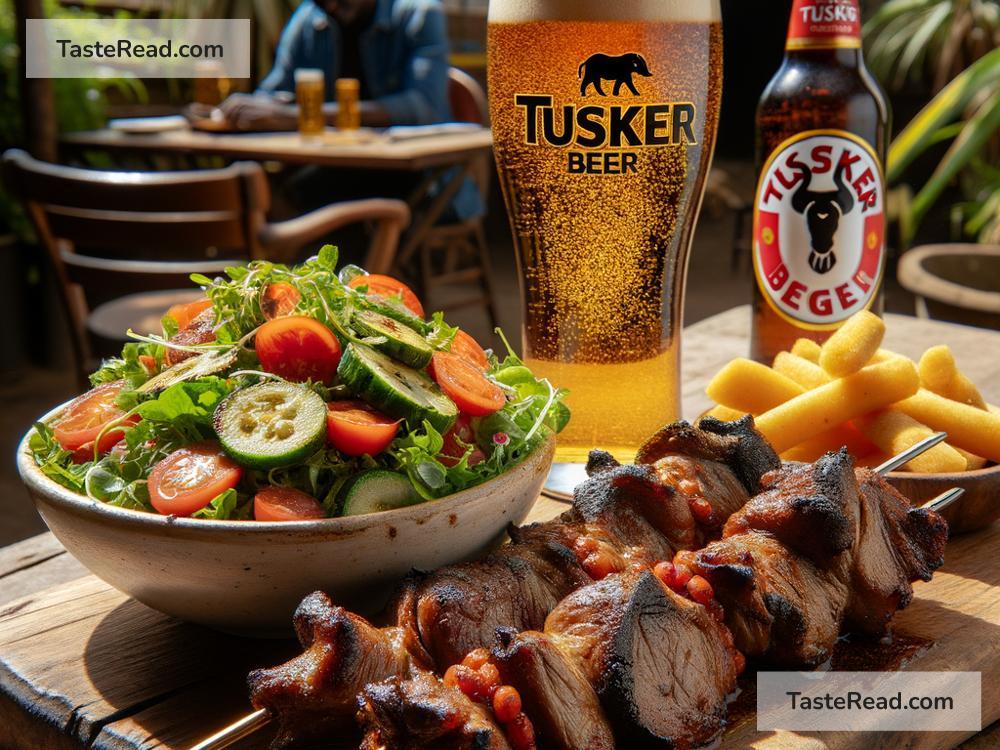Discovering the Tangy Goodness of Kenyan Nyama Choma
In the heart of Kenya, there’s a culinary treasure that’s as much a feast for the senses as it is a testament to the rich tapestry of Kenyan culture. It’s called nyama choma, and for many, it’s more than just a dish—it’s an experience that weaves together the threads of tradition, community, and sheer deliciousness. If you’re yet to savour the tangy goodness of this Kenyan delight, let me take you on a flavorful journey to discover what makes nyama choma an undeniable centerpiece in Kenyan cuisine.
Nyama choma, in its simplest translation, means “grilled meat” in Swahili. Yet, this straightforward description doesn’t do justice to the symphony of tastes and the warmth of the gatherings that nyama choma embodies. It’s typically made with goat or beef, which is then marinated in a blend of spices before being grilled over an open flame to perfection. The result? A tender, succulent treat that’s both a celebration of simplicity and a showcase of grilling mastery.
The process of preparing nyama choma is akin to a ritual, steeped in tradition and communal spirit. It usually begins with the selection of the meat. The Kenyan way values freshness, and it’s not uncommon for the meat to be bought from local butchers or even selected live and prepared on-site. The marinade, while simple, is what gives nyama choma its signature taste. Ingredients such as lemon juice, salt, pepper, and sometimes a hint of local spices like piri-piri are used to infuse the meat with flavor.
But the real magic happens at the grill. The meat is slowly cooked over charcoal, with the grill master turning it frequently to ensure it cooks evenly while soaking up that smoky aroma that’s synonymous with authentic nyama choma. This method doesn’t just cook the meat; it tenderizes it, locking in the juices that make each bite an explosion of flavor.
Serving nyama choma is an art in itself. It’s usually presented on a wooden platter, often accompanied by simple sides such as kachumbari—a spicy mix of tomatoes, onions, and cilantro—and ugali, a staple Kenyan dish made from cornmeal. These accompaniments aren’t just there to fill the plate; they complement the meat perfectly, adding a fresh zing that cuts through the richness and balances each mouthful.
Nyama choma is more than just food. It’s a centerpiece at social gatherings, a tradition at celebrations, and a must-have at local eateries, known as “nyama choma joints.” These places are where people from all walks of life come together, drawn by the allure of good food and the camaraderie that dining on nyama choma brings. The atmosphere is electric, with the air filled with laughter, music, and the irresistible scent of grilling meat.
For anyone looking to explore the heart of Kenyan culture, experiencing nyama choma is a must. It’s a tantalizing treat that transcends the boundaries of simple cuisine to become a sensory journey into the essence of Kenya. From the selection and preparation of the meat to the joy of sharing a meal with friends and family, nyama choma encapsulates the spirit of community that’s at the core of Kenyan traditions.
If you find yourself in Kenya, or at any place that offers this exquisite dish, don’t miss out on the chance to delve into the tangy goodness of nyama choma. It’s an adventure for your taste buds, a warm embrace from Kenyan culture, and a reminder that sometimes, the simplest things in life are the most extraordinary.
In conclusion, nyama choma is more than just grilled meat; it’s a cultural icon that represents the warmth, community, and vibrant spirit of Kenya. It stands as a testament to the fact that the best meals are those shared with laughter, steeped in tradition, and enjoyed with a sense of togetherness. So, the next time you’re eager to try something new, let the tangy goodness of Kenyan nyama choma be your guide to a world of flavor and fellowship.


